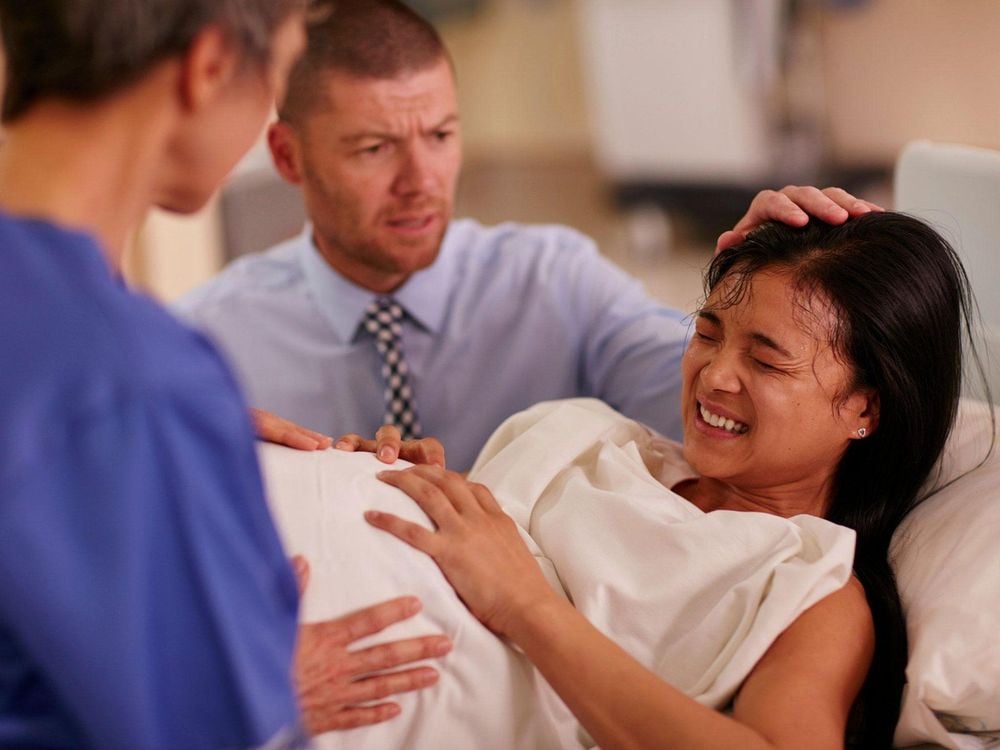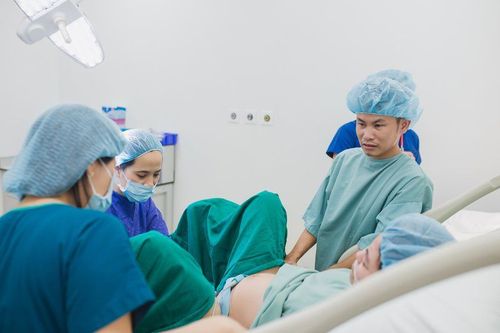This is an automatically translated article.
The article was professionally consulted by Specialist Doctor II Lai Thi Nguyet Hang - Department of Obstetrics and Gynecology - Vinmec Ha Long International Hospital.During childbirth, a woman encounters many health problems, including bone-related problems during childbirth. Injuries during this stage can lead to a bruise, dislocation, or fracture. Although these lesions can be slow to heal, most can be managed with effective treatments.
1. How are bones damaged during childbirth?
The pressure of the baby passing through the birth canal can often bruise, dislocate or even break the mother's coccyx. Fractures are not common, but some women actually hear cracking or popping when the sacrum is broken.
The coccyx (coccyx) is made up of the last 3 to 5 vertebrae of the spine - for most people, that's 4. The coccyx's top vertebrae may or may not be associated with bone. below it, but the lower 3 vertebrae are usually fused together. Several pelvic muscles and ligaments attach to the coccyx. The 5 fused vertebrae above the coccyx are called sacrum. There is an articulation between the coccyx and the sacrum that usually allows limited movement.
Pregnant women are more likely to injure their spine during childbirth, if the baby is heavy or in an odd position, or if the pelvis is very narrow or has an odd shape. The shape and mobility of the coccyx may also play an important role. Women who have previously injured their coccyx have a higher risk of injury during childbirth.

2. How is this injury treated?
If you have an injury to your spine, you may experience pain in that area as well as pain that tends to be most severe when you sit. You may feel pain when you change position from sitting to standing or if you strain to have a bowel movement.
When going to the doctor, they will ask for an internal and external examination. X-rays are of great diagnostic value in this case.
You will be asked to rest as much as possible and keep an ice pack on the painful area several times a day for the first few days to reduce swelling and pain. Your doctor will likely also prescribe a nonsteroidal anti-inflammatory drug (NSAID) such as ibuprofen to reduce swelling and pain. Lying on your side is probably the most comfortable position.
If the pain becomes unbearable after a week or so, tell your doctor. They can prescribe stronger pain relievers. (If you're breastfeeding, let them know so they can prescribe medications that are considered safe for your infant.)
When you have to sit up, a donut-shaped pillow or cushion may help. may help, but you may find that it makes the pain worse. Some women use a special cushion that causes them to lean slightly forward. The cushion has an area that is cut out from the back so that there is no pressure on the coccyx. Choose the type of mattress that makes you most comfortable and has the ability to relieve pain.
In some cases, sitting on a firm surface and shifting your weight slowly from side to side can be more comfortable.
Constipation (including both physical and functional constipation) can be especially painful if you have an injured coccyx. Prevent it by drinking plenty of fluids, eating plenty of fiber, and using stool softeners, if you need to.

3. How long does it take to heal?
A bruised sacrum usually heals on its own in a few weeks. A fracture usually takes up to eight weeks to heal, although you may experience more prolonged pain from inflammation in the surrounding muscles and ligaments or chronic inflammation in the pelvic floor muscles.
If you continue to have pain, your doctor may refer you to a specialist. Treatment may include physical therapy or steroid injections and anesthetics. In rare cases of severe chronic pain that doesn't respond to more conservative treatment, your doctor may recommend surgery. However, surgery is not always good and carries a risk of complications.
4. Things to know to get pregnant next time
If you get pregnant again, let your doctor know that you broke or bruised your spine during your previous delivery. They will give you helpful advice about the pros and cons of trying for a vaginal birth or choosing another method of delivery during this time.
If you have previously broken your coccyx during the birth of a high-weight baby and the baby appears to be much smaller, you may decide to have a vaginal delivery. If you do, refer to different vaginal delivery positions but there's certainly no guarantee that it won't happen again.
After 9 months and 10 days of heavy weight, pregnant women go into labor and face a level of labor pain comparable to 20 broken ribs at the same time. In order for the birth to go smoothly and safely, pregnant women need to understand: - How the labor process takes place, how long does it usually take to have a normal delivery or cesarean section, to protect the best health? for the unborn baby.
Methods to relieve pain during childbirth, limit pain and relieve psychological pressure during labor. The way to push and breathe during childbirth is usually the right way so that the labor takes place quickly, the pregnant woman does not lose strength during childbirth. How to control postpartum uterine contractions in the shortest time. How to take care of the perineal suture does not cause infection and dangerous complications. Early postpartum re-examination to detect dangerous abnormalities such as residual placenta, missing gauze. Take care of the newborn until full month healthy. To ease the pain of childbirth, Vinmec offers a full Maternity program with a complete "painless delivery" service during and after birth using non-morphine epidural and sedation techniques. ashamed. During the birth process, the mother will be guided by the midwives on how to push and breathe properly, the baby will be born in just 10-15 minutes. After birth, the baby will be cared for in a sterile room before being returned to the mother.
Pregnant women will rest in a high-class hospital room, designed according to international hotel standards, 1 mother 1 room with full facilities and modern equipment. Mothers will be consulted by nutritionists on how to feed the baby before being discharged from the hospital. Postpartum follow-up with both mother and baby with leading Obstetricians and Paediatricians.
Specialist II Lai Thi Nguyet Hang has more than 30 years of experience in the field of obstetrics and gynecology. The doctor used to teach at Hai Phong Medical College, Hai Phong Medical University and worked at Hai Phong Obstetrics and Gynecology Hospital before becoming an Obstetrician and Gynecologist, Vinmec Ha Long International General Hospital.
Please dial HOTLINE for more information or register for an appointment HERE. Download MyVinmec app to make appointments faster and to manage your bookings easily.
Reference: babycenter.com
MORE
Stages of labor and specific signs What happens when labor begins? Instructions on how to push and breathe during a normal birth














